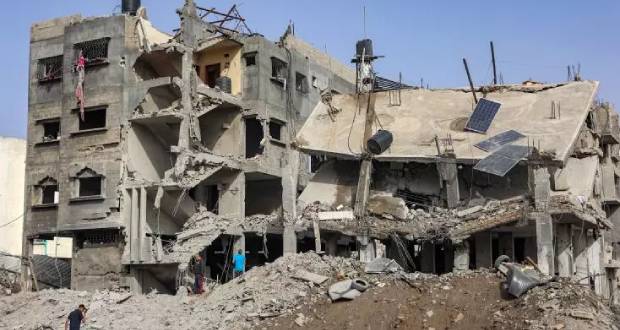Publicité
Halting the death toll with new road layouts
Par
Partager cet article
Halting the death toll with new road layouts

So many deaths following road accidents have occurred leaving families in utter distress on the loss of life of the victims and yet the toll is increasing day by day. Despite new regulations and the recent high increase in the fines for road traffic offences, the light is not yet to be seen at the end of the tunnel as regards fatal road accidents. The number of deaths is appalling for a country our size and has so far reached 127 for the past ten months. With a fleet of vehicles of over more than 300,000, the road network has for long sustained an intensity in traffic causing bottlenecks and congestion and too many accidents.
What can therefore be done to halt the holocaust on our roads? Can a strategic plan be produced and implemented in the immediate term to curb the number of fatal accidents by 20, 30, 40 and 50 % in the near future? Is this objective, mission and vision attainable?
Following each accident, it is high time to find out the causes in each case, the time, the place, the road section, the human and mechanical reasons, the offence committed to avoid any recurrences. It will serve as information for drivers to take note while Investigations are carried out and the total loss vehicles are kept in police stations pending the completion of the reports.
There is already a crackdown by the police on drivers speeding, driving under the influence of alcohol and using mobile phones, not wearing the safety belts and generally not respecting the road signs and the traffic code. Fifty per cent of accidents are reported occurring at night because of poor visibility, misuse of headlights and in bad lighting condition, high speeding, reckless overtaking, and the list of offences carrying heavy fines and penalties is long indeed until disqualification. Speeding on tires not fitted for such type of vehicles, bad weather conditions and slippery roads, non-respect of distances that must be kept between vehicles according to the speed of faster and slower vehicles, dangerous overtaking when a vehicle is already coming in the opposite direction or at blind bends. Despite radar surveillance both mobile and fixed at spots which limit speed to 40/60/70/80/110 km/h, drivers do not care about what is lying ahead and continue to accelerate above the limits which are conspicuously displayed with visible signs to slow down at intervals before the fixed radars.

But a lot of motorcyclists have met with mortal accidents on our roads. So what are the urgent measures that can be taken despite control by the police day and night, verifying licences, fitness certificates, insurance cover, tyres, lightings and the wearing of helmets and fluorescent jackets and with head and rear lights always on? Human error in judgment may be the principal cause but the road infrastructure may harness the behavior of motorcyclists not to speed and zigzag in the middle of the road over the white line and in the midst of moving vehicles.
To drastically curb the number of fatal accidents involving motorcyclists, there is a need to carry out a new layout on specific roads to.
Dedicate a lane for the exclusive use of motorcyclists on the left shoulder wherever practicable with clear demarcation of a continuous white line on principal roads and motorways (for instance from Grand-Bay to the entrance of Port-Louis). It is for the authorities to designate which roads should be so marked with motorcycle lane. The speed limit should be restricted to 60 km/hr in rural or urban roads.
The next lane should be reserved for buses, lorries, heavy vehicles, and the speed according to the existing limits which should be reviewed on a new gradual scale moving from 100 to 80 and then 70km/hr (a good example is the motorway approaching the entrance of Port-Louis from the North). No bus lane to be tried on the motorway from the Airport to Wooton from which a bus lane has to be followed to Phoenix roundabout. A bus lane was even proposed to ease congestion to the capital before the light railway project was proposed many years ago. The third lane should be left for cars and vans with the speed limits as prescribed above.
All lateral roads should be marked with a middle white line to discourage reckless overtaking on secondary and specially bus routes. A good example is the Bois-Cheri road from Grand-Bassin.
Trials can be carried on for example on the motorway from Grand-Baie to Port-Louis and traffic monitoring be followed by the police patrol motorcycles for good driving habits especially in peak morning and afternoon hours.
Pedestrian crossing signs should be fixed well before the spot for crossing with a warning sign “beware pedestrian crossing ahead” and once a pedestrian has started to cross, all vehicles should slow down and stop (refer to La Croisette roundabout to Sottise).The Vingt-Pieds road and even the Sottise road is now increasingly diverting dense traffic to Grand-Baie and Goodlands.
A manual or leaflets on defensive driving should be distributed to drivers on the road with slogans in creole and french and advices on sound driving practices, respecting the road regulations by drivers of motorcycles,cars,vans,buses, lorries and heavy vehicles.
Vehicles trying to overtake or change lane suddenly signify their intentions by lighting appropriate signals of side yellow lights to the right but vehicles behind do not slow down at all to let go the vehicle in front of an obstacle such as a lorry or bus , a vehicle on a stand still position with warning triangle.(example the entrance to Curepipe to change lane to the city). Reduction of speed to 30 km/h on approaching any bend where accidents are easily caused by not slowing down in time despite advance signs and directions.
Young drivers who have passed the driving test should be issued at first with a licence of rose colour for one year as probation and then undergo a second test on motorways and in Port-Louis before being issued with the blue licence. This licence is conditional on zero offence for one year. Many fatal accidents have been caused by inexperienced young drivers aged 22 to 26 who fail in appropriate sound judgment and anticipate unforeseen circumstances while overtaking. With an island wide review of the road network layout, it is expected that the number of fatal will decrease, all regulations remaining the same.
Can the Road Safety Unit, the National Transport Authority and police traffic patrol squad review the road infrastructures, markings and speed limits and carry out any improvement to the network to decrease road accidents which cause loss of life and stress to drivers? Accidents may happen in fraction of seconds due to carelessness and lack of concentration.
We ‘hit’ the road everyday and want to ‘come back’ home safely without accidents which leave lifelong scars and handicaps on our bodies and horrendous damages to our vehicles beyond recognition. Admission in hospitals for fractures of the skull, limbs, the spinal cord, facial wounds and eyesight warrant costly remedies to be able to drive again a vehicle.
Drivers pay road taxes and fuel taxes by millions and so have the right to be protected by all necessary improvements in the road layouts and infrastructures, prevention of fatal accidents and protection of life.
Publicité
Les plus récents






